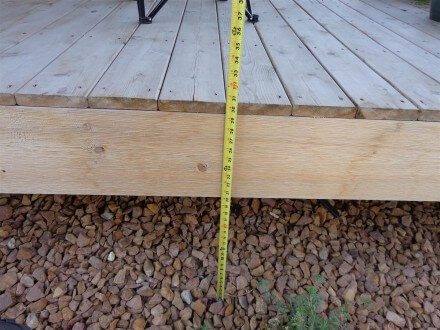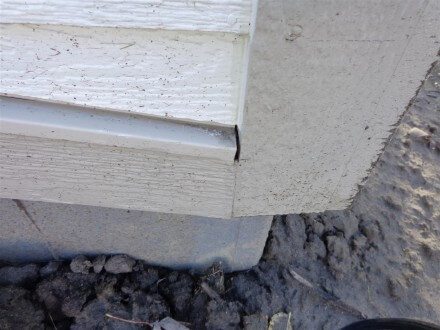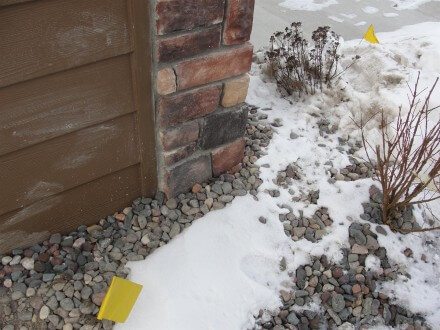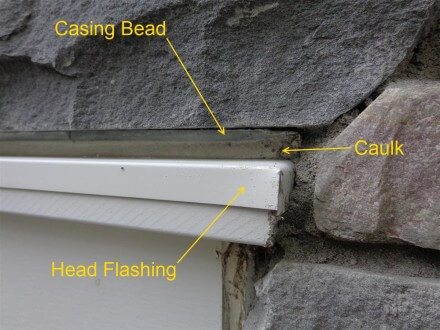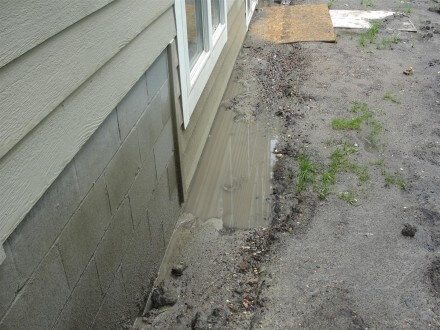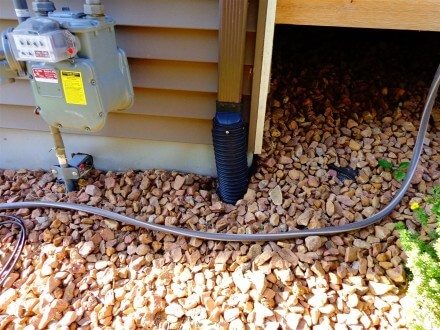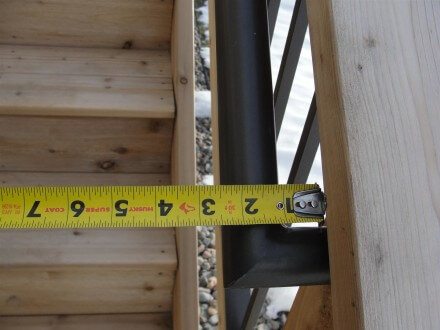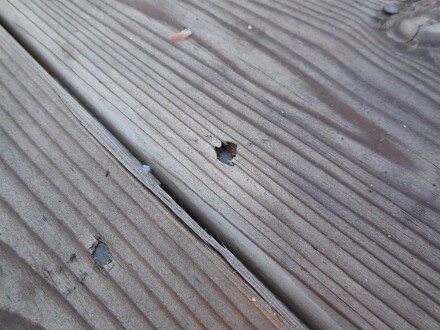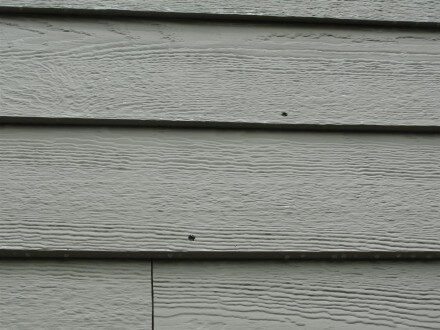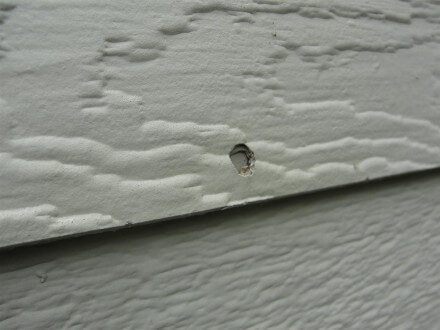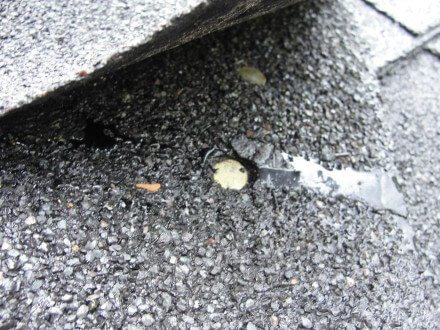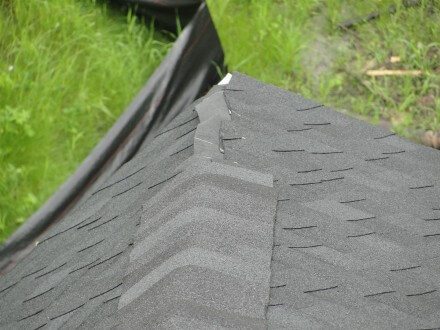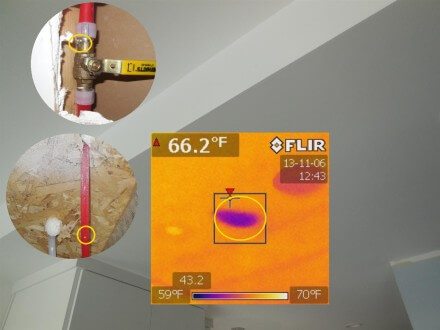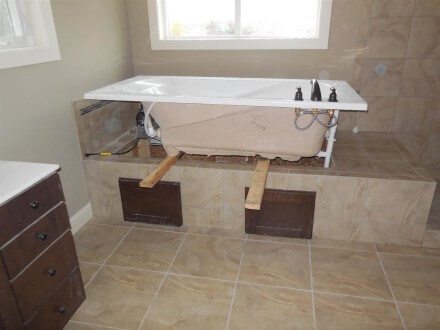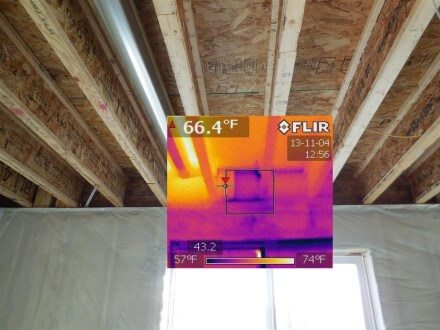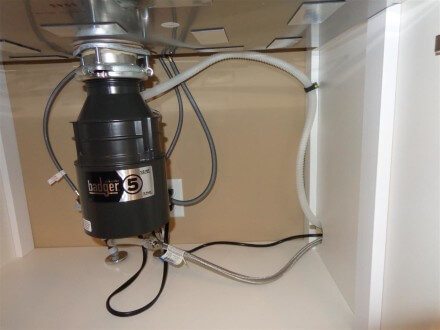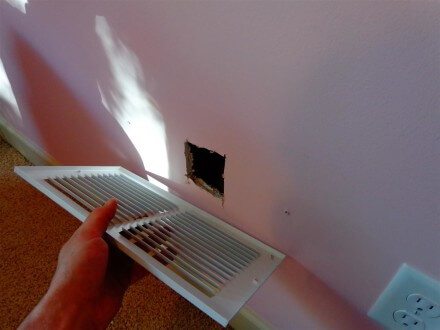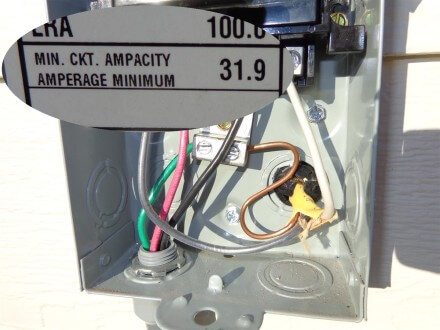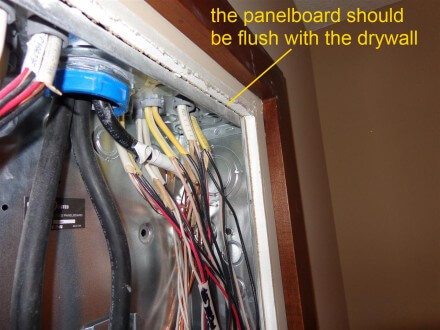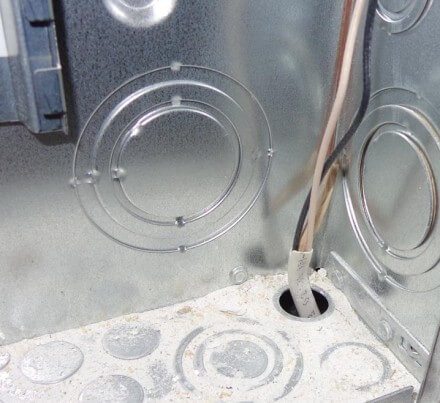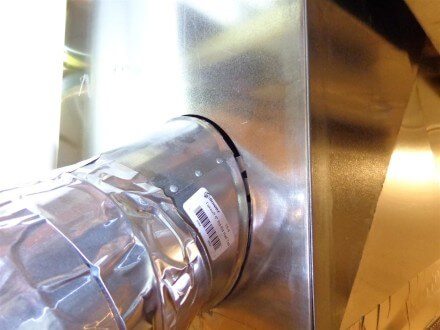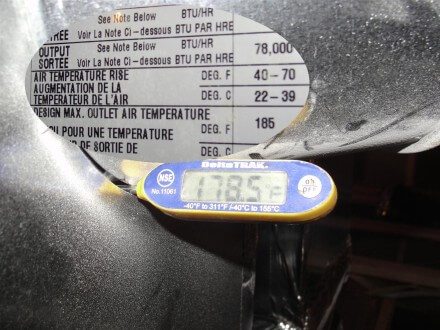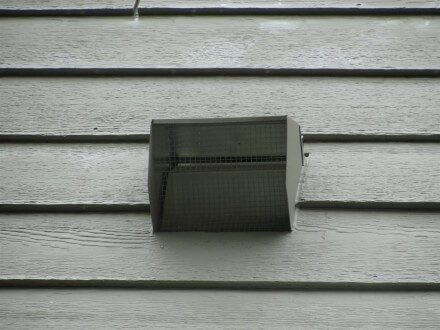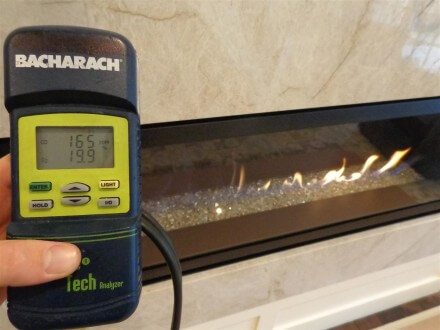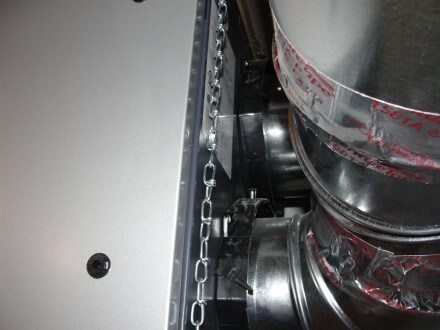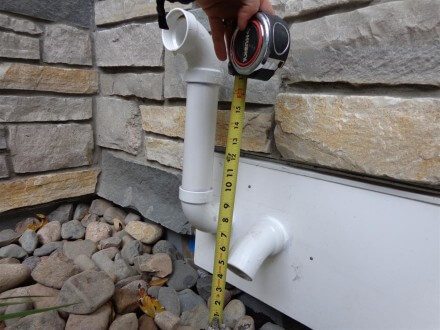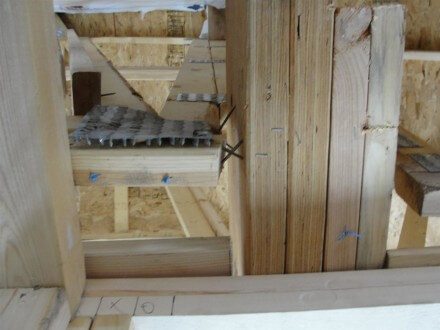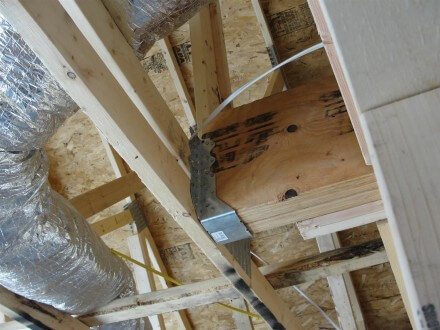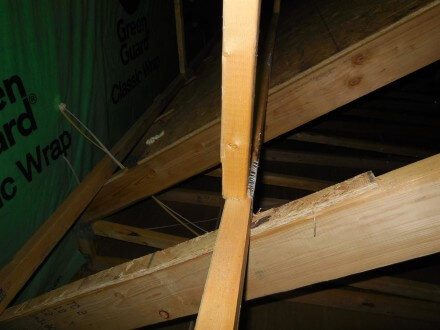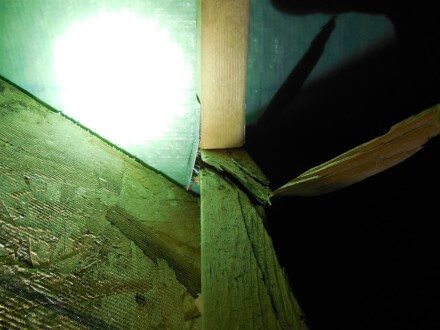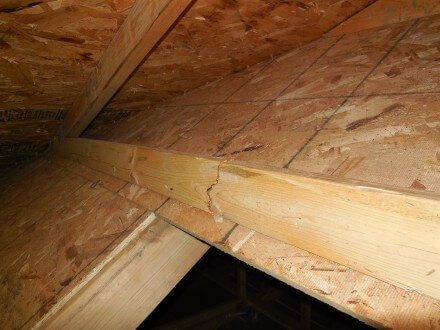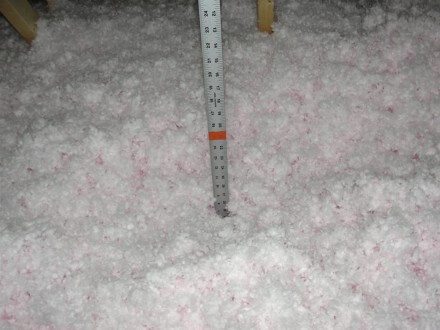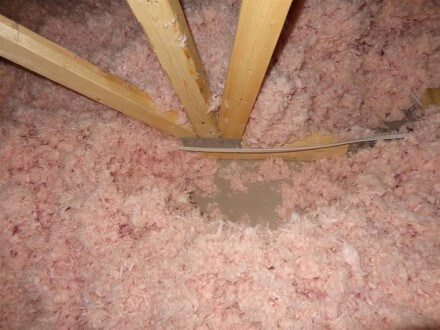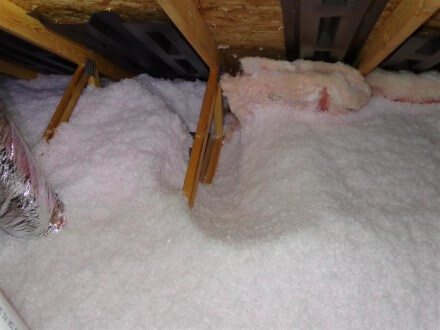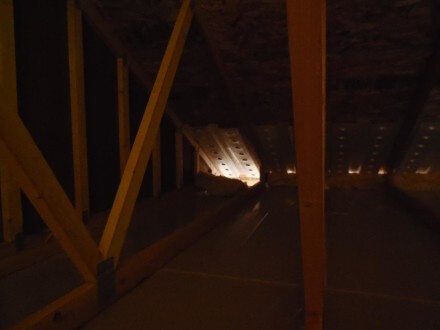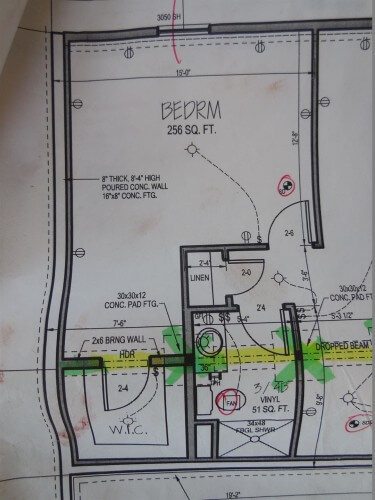“You’d be wasting your money if you hired a home inspector. This is a brand new house that has been inspected dozens of times by the city of Perfectville, and they’re especially picky. If there was anything wrong, they would have already caught it.”
Sound familiar?
This is the same line that most builders give to new home buyers while trying to talk them out of a home inspection.
New houses are never perfect. Instead of discussing all of the ways that new construction homes get built improperly and things get botched, I’d like to share some photos I’ve taken at new construction homes over the past year. We inspect a lot of new construction homes, and we find a lot of defects. Some of these photos are similar to photos I’ve shared in the past, but none are the same.
Exterior
Is this safe? Click on the photo to see a blowup. You’ll see that the deck is about 30″ above grade, measured from the edge of the deck.
Here in Minnesota, we’re still using the 2006 IRC for our building code, which allows the installation shown above, but what happens when the grade drops off right away? The photo below shows the same deck. As you can see, the grade drops away from the deck immediately, making a fall significantly more than 30″. While this is arguably a code compliant inspection, home inspectors don’t inspect for code compliance; we get to make recommendations based on common sense.
Common sense says this isn’t a safe installation, and as soon as Minnesota adopts the 2012 IRC, this won’t be a legal installation any more. The diagram below from CodeCheck shows what the 2009 and 2012 versions of the IRC require for guards at a deck. If grade drops below 30″ measured 36″ out from the deck, a guard is required. I told the new home buyer to install a guard for safety.
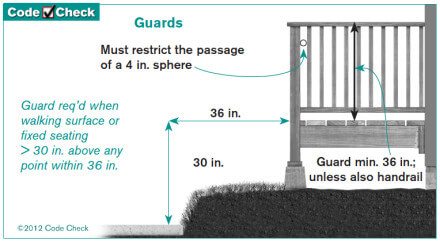
Here’s a terrible flashing detail at a new home in Plymouth. Water runs down that piece of metal and into the trim board. This will rot very quickly.
Here’s a double whammy. The composite siding on the left needs to be installed at least 6″ above grade, and the stone siding (adhered concrete masonry veneer) needs to be installed at least 4″ above grade. These are basic requirements that come from the manufacturers.
They say stone siding is the new stucco. It’s details like this that makes people say this. The head flashing should be thought of as the drain. When it’s caulked, water can’t drain out. This is a problem waiting to happen.
Builders typically don’t / won’t install gutters, but home inspectors recommend gutters at most homes. It’s not just about wet basements and foundation problems; it’s also about protecting the exterior envelope of the home from water.
I wrote an entire blog post on water management at new construction homes earlier this year. The photo below gives an excellent example of horrible water management at a gorgeous new construction home in Eden Prairie. A ridiculous amount of roof water gets directed to that single downspout, and there’s no simple way to deal with this water.
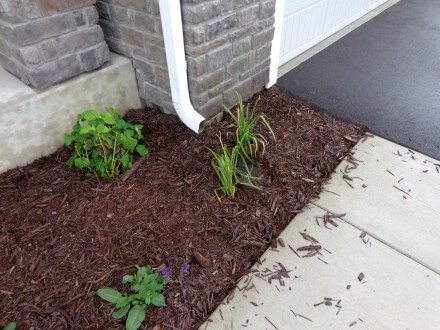
I also wrote a blog post this year about connecting downspouts directly into yard drains; this is a bad practice that can lead to water backing up the downspout during the winter.
This handrail was installed too close to the guardrail; it needs to be at least 1-1/2″ away. Do I go around measuring handrails? Heck no… but if I grab the handrail and my knuckle hits something, it’s too close. I measure it to document that it’s not installed properly.
Most new construction homes don’t come with decks, but decks can sometimes be added on by the builder for an additional fee. In many cases, the fasteners are severely over-driven into the deck boards. This will shorten the life of the deck boards.
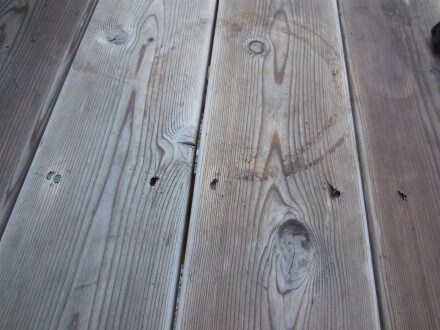
There are also a lot of new construction homes with overdriven fasteners at the siding.
Thankfully, this isn’t a major defect; LP Smartside has a list of fixes right in their installation instructions. Nevertheless, I’m always glad I’m not the one who has to go around fixing it.
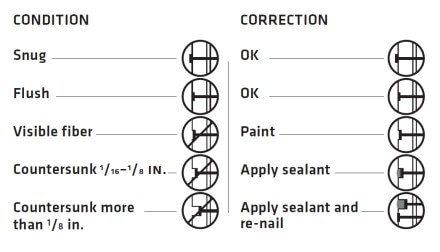
Roofs
Overdriven nails is a common installation defect with new roofs. When nails have blown through the shingles everywhere, it’s a defective installation. If this just happens in a few places, it might be appropriate to re-nail the shingles. When this happens everywhere, the appropriate repair would be to tear the entire roof covering off and start over. I’ve seen this happen at a number of new-construction houses this year.
Side note: Owens Corning has addressed this issue with the creation of SureNail® Shingles, which have a strip of fabric running through the nailing area to help make the shingles stronger and to help prevent improper nailing. Milind just had these installed at his own house, and said it’s just about impossible to overdrive the nails. These shingles seem like a great idea.
This new construction home in Maple Grove had several shingles missing at the back corner of the house. It was a fairly steep two-story roof, so I never got close enough to the edge to figure out what went wrong with the installation.
Plumbing
This image shows a new construction house in Saint Louis Park that had a leaking shutoff valve inside the wall; the water was draining down the PEX tube and dripping onto the kitchen ceiling. This was a lucky find; if I hadn’t been using my IR camera to scan the ceiling for a leaking shower, I never would have identified this leak. Click on the photo for a large version.
The whirlpool tub pictured below apparently leaked a lot of water through the house a few hours before the inspection, and was being repaired when I arrived.
The part that the builder didn’t know about was that the water traveled across the first floor ceiling, through an exterior wall, and down into the basement. An infrared scan and a follow-up test with a moisture meter confirmed there was water in all these places. Let’s hope it all got dried out.
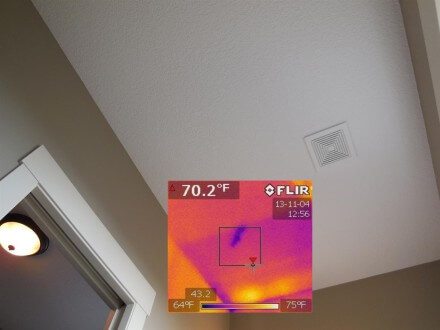
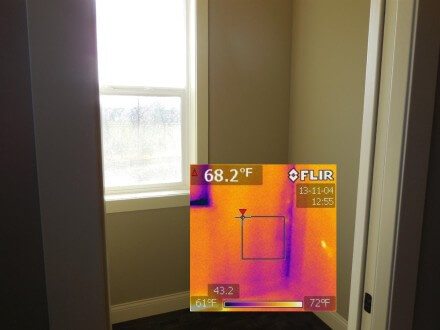
Not all plumbing defects are so obvious; dishwashers need to be installed with a high loop at the drain to help prevent a potential cross-connection. The dishwasher drain shown below doesn’t come close to being correct; the drain hose needs to be looped as high as possible, not simply to the underside of the sink.
It’s common to have a bath tub access panels with just drywall behind it, but this particular access panel, disguised as a return register, was hiding a comically undersized access hole for the tub.
Electrical
There aren’t a lot of electrical defects at new construction homes, but they do exist. Last year I blogged about how chandeliers above bath tubs are a no-no. This no-no zone extends 3′ out from the tub. The chandelier shown below was about 20″ away from the tub, measured horizontally. Too close.
This next image shows the electrical disconnect for an air conditioner along with some information printed on the air conditioner, stating the minimum ampacity of the conductors is 31.9 amps. The orange cable coming into the box has 10 gauge conductors, which are good for up to 30 amps. No more.
A fairly common defect with new construction homes is a main electric panel improperly recessed into the wall. With combustible construction (wood framing), the main panel needs to be installed flush with the wall. It shouldn’t be recessed at all.
Here’s a surprising defect; someone forgot to install a cable clamp where the cable entered the panel. This is done with ‘handyman’ wiring all the time, but was a surprising defect to find on a new construction home.
HVAC
Gaps in ductwork all over the place. All the time.
In last week’s blog post I discussed how to check the temperature rise on a furnace. Of course, I don’t do this at every inspection, but if I put my hand on the supply plenum and it feels too hot, I’ll check. In the photo below, this brand new furnace had a temperature rise of nearly 110 degrees, while the specs called for a max rise of 70 degrees. Let me remind you, this installation had already been inspected and approved.
I don’t know what the problem was with this hood fan, but the damper didn’t open for the fan at the exterior. We find these types of defects because we start our inspection by turning on all of the exhaust fans, then we head outside and make sure they’re working as we inspect the exterior.
This gas fireplace was leaking exhaust gases back into the home, and those exhaust gases had a high level of carbon monoxide. Scary stuff for a new installation that’s already been inspected and approved, dontcha think?
It’s fairly common to have a brand new furnace that leaks condensate from a loose connection inside the upper cabinet.
Here’s a brand new HRV that wasn’t balanced. If it had been balanced, the dampers would have been screwed into place.
Here’s a super easy one. That lower white pipe in the photo below is the combustion air inlet for the furnace; if it gets blocked, the furnace won’t run. Can you guess what’s wrong with this installation? I’ll have the answer at the end of this post.
Framing
If you’re having a new home built and you make any framing changes to the original plans, beware of hack modifications. The photos below come from a pre-drywall inspection I did earlier this year where a big beam had to be moved, and it wasn’t done properly.
Here’s another photo from the same house. There’s no way that beam is supposed to be hanging from that truss.
Damaged and broken trusses will sometimes show up in hard-to-access attic spaces.
Attics
As I mentioned in a blog post at the beginning of the year titled “Who Inspected Your Attic?“, the vast majority of attics never get inspected after the insulation is installed. The insulation installer simply leaves a certificate that says the insulation was installed to code, and the building official signs off on it. That orange mark on my yardstick shows what the insulation depth was supposed to be.
I find insufficient insulation at roughly three out of four new construction houses that I inspect, probably more.
Here’s an unexplained void in the garage insulation.
Here’s an easily explained void in the insulation: the wind wash barrier blew out of place, so wind blew into the attic and pushed the insulation out of the way.
Here’s a photo from a different new construction home where the wind wash barrier was blown out of place in the garage. The garage attic was also supposed to have been insulated, according to the buyer.
Plan Review?
Here’s a fun one that probably shouldn’t have made it past plan review… but it did. It made it past all of the inspections. Take a look at the blueprints showing the square footage for this bedroom, then look at the size of the window. See any problems?
Here’s the issue: the text at the top of the drawing, “3050 SH”, indicates a 3′ 0″ x 5′ 0″ single hung window. Just for the sake of argument, let’s say the window has a glazed area of 36″ x 60″ (it’s actually less). That would be 2160 square inches, or about 15 square feet of glazed area. The minimum required glazed area for a bedroom is 8% of the floor area (R303.1). That would be acceptable for a window having up to 187.5 sf. While the finished size of this bedroom is less than 256 square feet, it’s obviously much more than 187.5 sf.
In other words, this bedroom is missing a window. Oops!
Finally, to come back to that photo of the furnace inlet installed 4″ – 5″ above the ground, the issue is that it could get blocked with snow. If it gets blocked, the furnace won’t run. It’s supposed to terminate at least 12″ above the highest anticipated snow level, according to the manufacturer’s installation instructions.
That’s enough photos for this year. I’m sure I’ll have plenty more next year.
If you’re going to purchase a new construction home, hire a private home inspector to inspect it. If you’ve already purchased a new construction home and you’re still within your one-year warranty period but you didn’t hire a home inspector before you purchased, hire a home inspector to perform a one-year warranty inspection.
Related Posts:
- Photos From New Construction Home Inspections, part I
- Photos From New Construction Home Inspections, part II
- New Construction Tip: Have Your Builder Plan for Water Management
- “You’re wasting your money on a home inspection and we’re not going to fix anything.”
- Who Inspected Your Attic?
Author: Reuben Saltzman, Structure Tech Home Inspections

